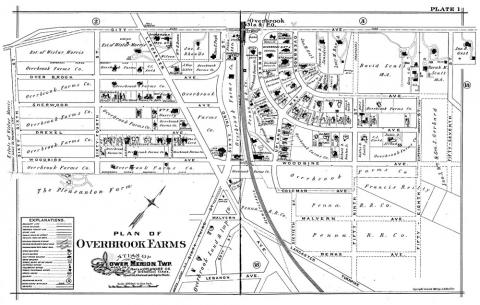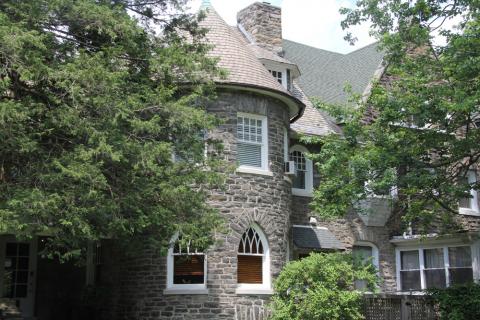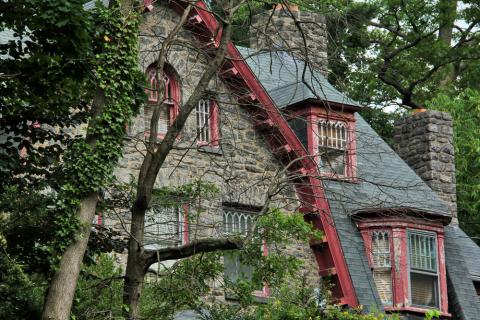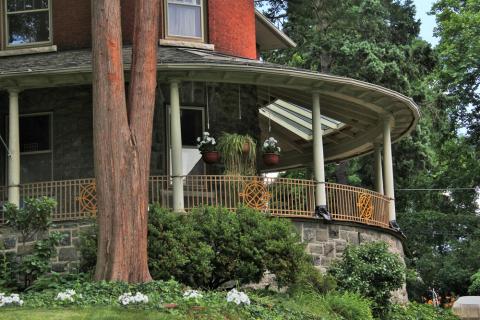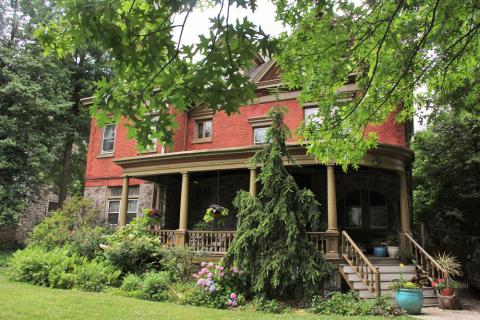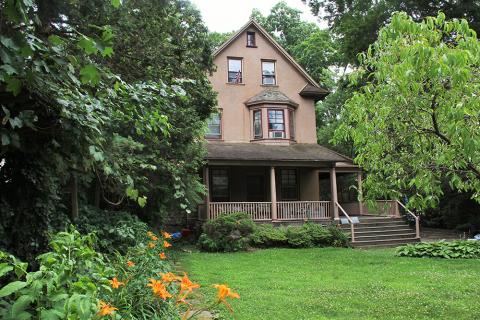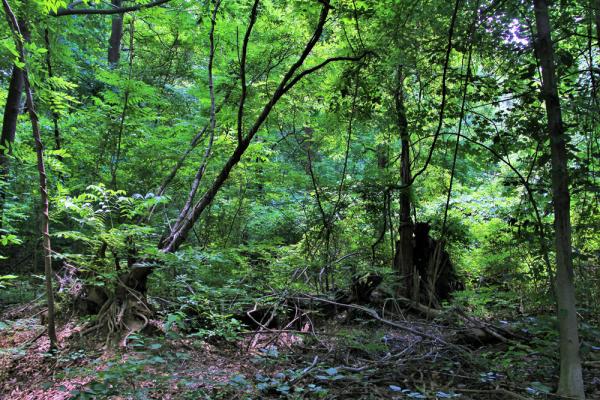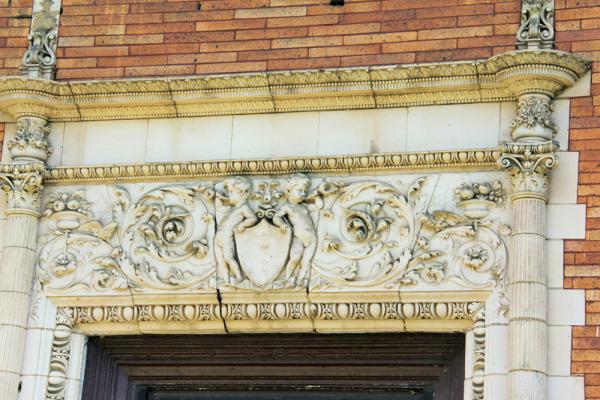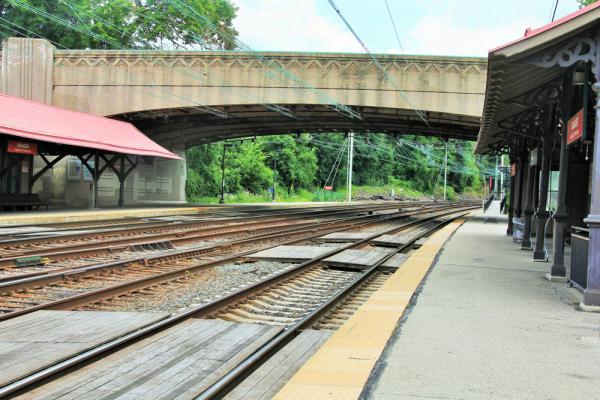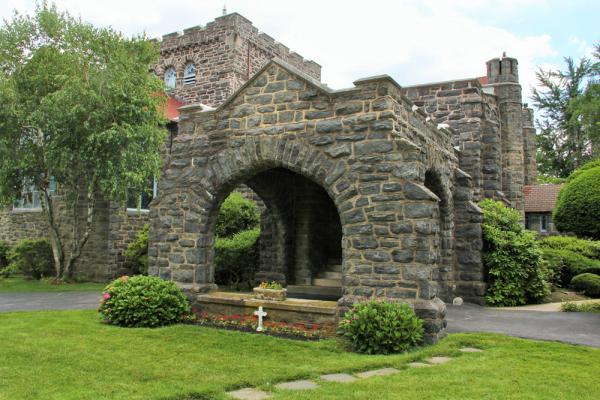Overbrook Farms
Part of
Overbrook Farms, an elite turn-of-the-20th-century suburban development notable for its curvilinear streets and late-Victorian and early-modern houses arose in the quadrant of 59th to 66th streets between City Line and Woodbine Avenues. The project involved more than 50 architects; its hallmarks were (and still are) spacious late-Victorian and early-modern houses arrayed on curvilinear streets.
Overbrook Farms originated in 1892 when the investment bank of Drexel & Co. commissioned the development of its holdings in the quadrant of 59th to 66th streets between City Line and Woodbine Avenues. Overbrook Farms was bisected by the Pennsylvania Railroad, whose Overbrook Station gave commuters rapid transit to downtown Philadelphia. The project involved more than 50 architects; its hallmarks were (and still are) spacious late-Victorian and early-modern houses arrayed on curvilinear streets. Most of the properties were developed between 1893 and 1912.
In 1892 the investment bank of Drexel & Co., whose senior partner was Anthony J. Drexel, purchased about 170 acres from the estate of John M. George—a parcel of farmland that extended from 58th to 66th streets between (for the most part) City Line and Woodbine Avenues, with the Pennsylvania Railroad, Lancaster Pike (a toll road until 1917), and Marion Road/Drexel Avenue approximately in the middle. The Drexel Syndicate commissioned the developers Herman Wendell and Walter Bassert Smith to build Overbrook Farms. The developers advertised a venue that rose “from 200 to 250 feet above the level of the city, insuring good drainage, coolness in summer, pure air, and as a result of all three, good health to the people.”[1]
When completed, elegantly designed single and twin houses purposed to attract upper-middle-class and wealthy buyers, were outfitted with electric lighting and “aerated pure water [was] extracted from proprietary underground springs completely independent of the city’s municipal water system”; “modern landscape gardening” and a “visionary street system” (“gorgeous and grand,” curvilinear roadways and sidewalks, replete with streetlights) were also the order of the day, as were 64 trains, which stopped at the refurbished Overbrook Station on the half hour all day and into the evening. In 1899 telephones arrived in Overbrook Farms, with a locally operated exchange. The Overbrook Steam Heat Company, constructed in 1893 “generated steam that was distributed to each home’s cellar by protected pipes.”[2]
In its history of Overbrook Farms, the Overbrook Farms Club writes of the extraordinary success of what Wendell and Smith declared to be “probably the most luxurious suburb in America”[3]:
“It took a constellation of stars to create the universe of Overbrook Farms. The assembled architects, more than 50 in all, were inevitably attracted to designing home and grand apartments on sizable tracts of arboreal land. From 1893 until 1912, they collaborated to complete all but a small area of the approximately 170 acres that made up the development. By 1934, all of the 413 properties that originally populated the Overbrook Farms were complete. . .
Many of the architects who left their indelible signature on the neighborhood brought to their work an awareness of historical, classical, and contemporary aesthetics. They wrought the homes from Wissahickon schist, Pompeian brick, and stucco over brick. Their designs combine the broad range of styles informed by Europe, Asia, and Colonial-era revivals. These designs remain as timeless and alluring today as when they first opened their doors more than 100 years ago.”[4]
The Overbrook Farms Club (OFC) was Overbrook Farms’ vigilant civic association. The club was chartered by the Commonwealth of Pennsylvania in 1896 “to promote friendly intercourse to encourage field and other athletic sports, and to afford opportunity and means of cooperation and concerted action in matters of local interest which affect the community at Overbrook.” Having purchased a large field space on Upland Way between 59th Street and Woodbine Avenue, the organization formed a cricket team and bicycle and golf clubs. (The golf club’s grounds now belong to Lankenau Hospital.)
By 1915, the OFC had joined forces with the Civic Club of the 34th Ward, an association of Overbrook Farms women established in 1900, and now acted fully as a civic association. Until it disbanded in 1926, the women’s association attended to zoning, acquired extra policing as necessary, and brought street signs to Overbrook Farms.
As one of its main activities, the Overbrook Farms Club “took responsibility for snow removal from the sidewalks and purchased and maintained brooms and then snowplows, first using horses and then modern equipment as it became available to do so.” The OFC was attentive to other problems as well. For example, a 1912 committee report to the OFC board described “the mosquito nuisance in Overbrook,” replete with a map “showing some 36 breeding places and nearly 150 trouble spots.” The report was sent to the city’s director of public works, whose office took charge of the ensuing mosquito abatement.[5]
